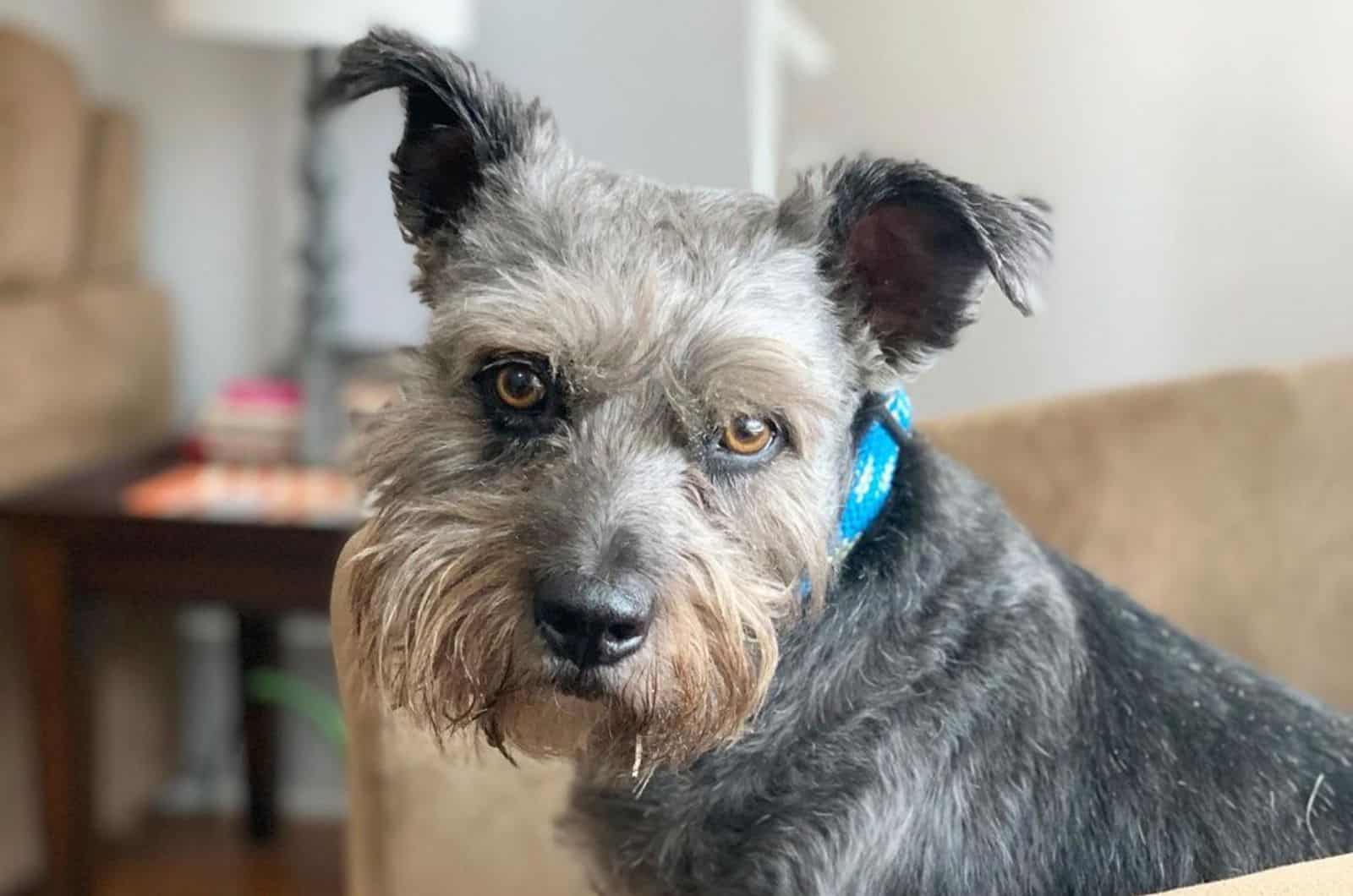Dogs are wonderful pets. They are friendly, loyal, and always delighted to see you. Which breed of dog is best for me? might be on your mind if you’re looking into getting one.
Annually, in the United States, the Terrier-Schnauzer mix becomes more and more well-liked, and for valid cause since they make intelligent, low-maintenance dogs that are suitable for all types of households.
You can use this information to evaluate if a Schnauzer Terrier mix is the perfect choice for you. You will discover the most important things about these dogs here.
So, continue reading if you’re considering bringing one of these cuddly companions home!
What Is A Schnauzer Terrier Mix?
If you adore Schnauzers, but also appreciate the advantages of other breeds, a Schnauzer mix might be of interest to you. With its many lovable traits, the Schnauzer has been crossed with more than 50 other dog breeds.
A Schnauzer Terrier mix can be any variety of the Schnauzer or the Terrier, crossed together to make this dog breed.
Breeds can be combined to create interesting hybrids with distinctive qualities, so one of the mixtures might be a good fit for you. Schnauzers as well as Terriers are both inherently bright breeds, so the cross-breed results in a pup that is extremely intelligent.
Introducing The Origin Of The Parent Breeds
Before diving more deeply into certain characteristics of this mixed dog breed, we have to understand the background of the parent breeds.
Both the Schnauzer dog and the Terrier parent are extremely intelligent (and sometimes stubborn) dog breeds.
They were used as working dogs in the past because they were intelligent enough to understand what the pet parent wanted from them. They would do the given tasks with ease. Even if these dogs now serve as great family dogs, their background cannot be left unheard.
The Schnauzer
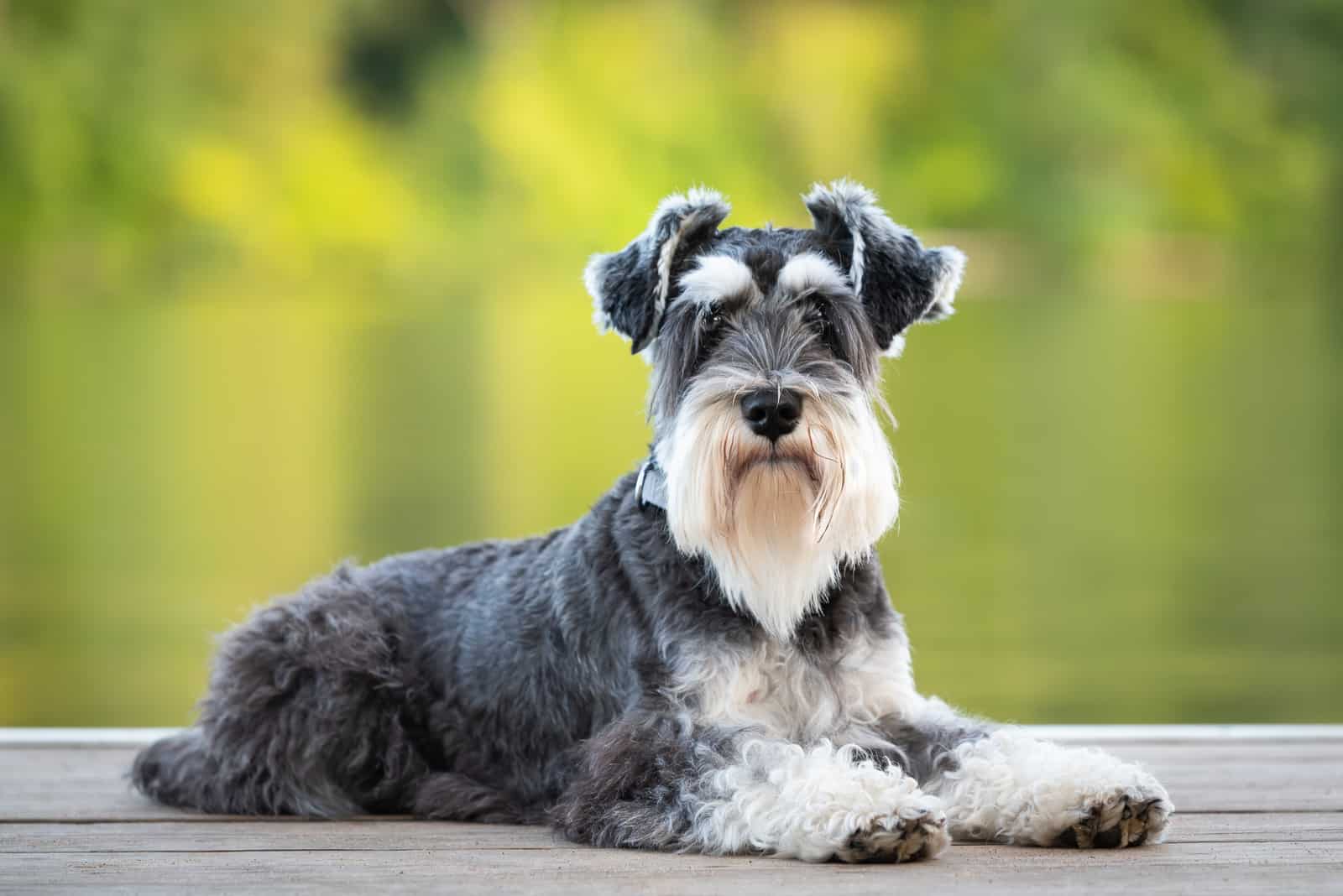
Around the 14th and 15th century, the Schnauzer breed first appeared in Southern Germany. Back then, farmers and tradespeople would roam the countryside in heavily-packed carts to promote their goods.
They required a dog of medium size and versatility that would be able to guard the cart while remaining manageably small to fit within the cart itself.
These sensible folks likewise desired an excellent ratter to control the pests at home.
German dog breeds were becoming popular, and German dog breeders started to become interested in this adaptable native breed in the middle of the 19th century.
In order to produce the Miniature and, eventually, the Giant Schnauzer, the medium-sized dogs were additionally bred with other breeds at this time.
The first Schnauzers may have been introduced earlier, but they weren’t common, and they weren’t introduced in the UK and America until around 1900.
They were most likely carried to England as well as the New World by travelers and traders going home as well as by furry friends of immigrant households.
The German Army employed Standard Schnauzers as security dogs during World War I, while the Red Cross employed them as messengers.
Miniature Schnauzer Background
It wasn’t until 1899 that the Miniature Schnauzer had first been displayed as a separate breed.
It is said to have originated from a very selective breeding program that combined the tiniest Standard Schnauzers alongside Affenpinschers, gray Spitz, as well as black Poodles.
The founding lineage for the breed in America was a set of four miniature dogs brought over by Mrs. M. Slattery, from the Marienhof Kennels in 1924.
In 1926, the first miniature Schnauzers were recognized as a distinct breed. Mrs. Slattery’s Ch. Moses Taylor became the first American winner the following year.
Given that both winners received this honor on the exact same day, but at separate events, it was shared with Don v. Dornbusch.
Since then, the Miniature Schnauzer‘s recognition as being one of the most famous breeds of dog has increased dramatically.
Giant Schnauzer History
The latest of the three Schnauzer types to be developed was indeed the Giant Schnauzer.
The “Riesenschnauzer” — literally, “Giant Snouter” in German was originally bred in Germany, and was utilized to herd sheep and cattle. It was also employed as a watch dog or a guard dog.
E. Von Otto claimed that the enormous “big Schnauzer” of Munich would have been the ancestor of the Giants in his 1928 booklet on German dog breeds.
This was an Old German Shepherd dog-related canine breed with a lengthy, scruffy coat. This was most likely crossed with a black Great Dane, providing the giant strength and power as well as a natural instinct for defense.
In addition, Von Otto noted that “he bears a very striking likeness towards the Bouvier des Flandres in his physical features and excellent character.” This breed of dog was also created to herd cattle, but its cleverness, strength, and adaptability have subsequently been used for a variety of purposes.
While the breed was introduced to the USA in the 1930s, one of the earliest exporters of giants into the United Kingdom was Mary Moore’s Odivane Kennel.
However, up until the 1960s, there were only around 50 Giant Schnauzers registered annually in the United States.
The Giant Schnauzer’s popularity has grown significantly over the past 40 years, thanks to selective breeding, importation from prosperous kennels, and word-of-mouth recommendations of the breed.
The Terrier
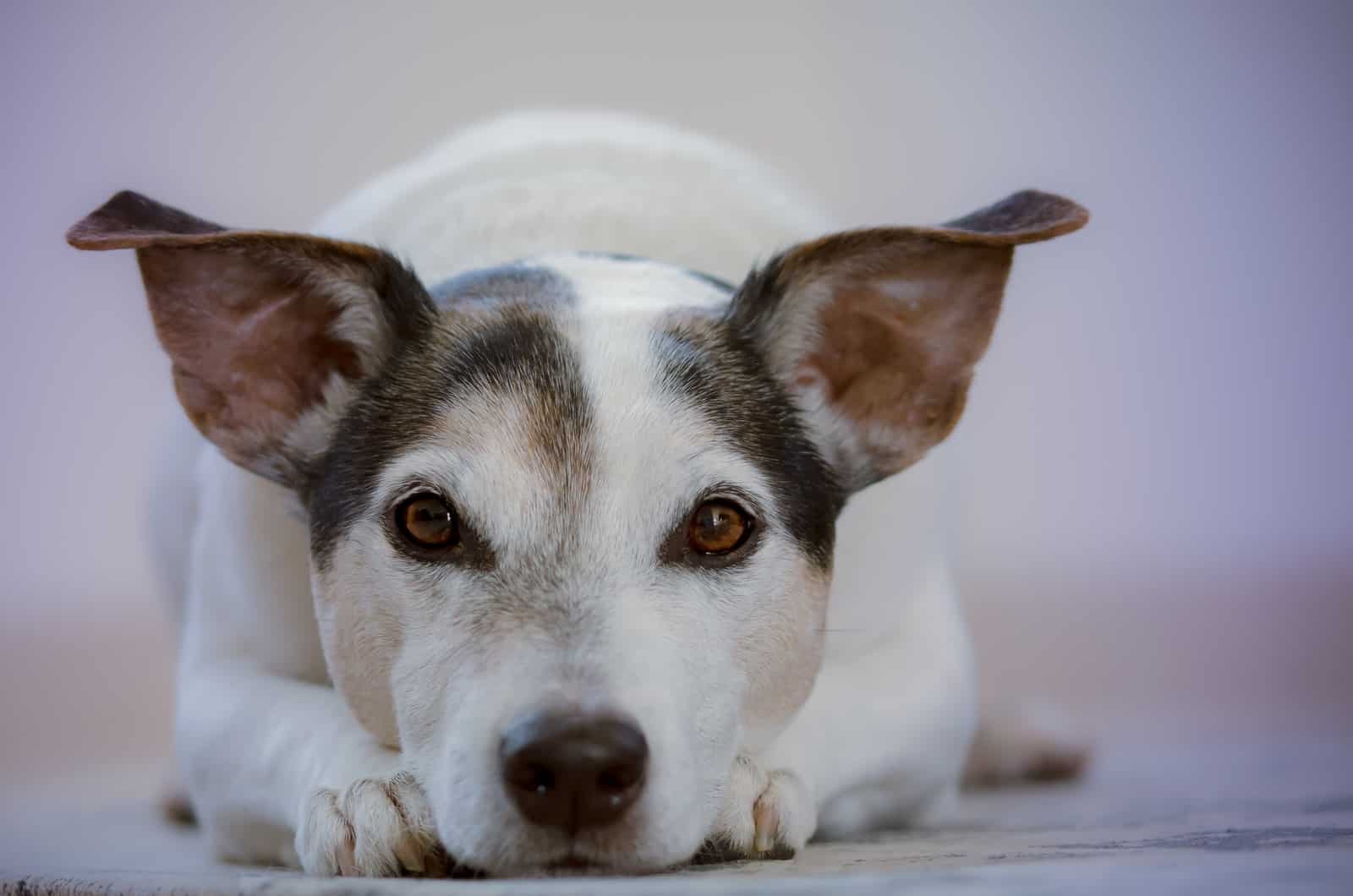
Terriers are a result of man’s changing demands, and they have their origins in the British Isles. Terriers are a fairly recent breed of dog in comparison to hounds. Almost all early terriers were bred with the intention of fox and vermin control in mind.
People who employed these specimens for work preferred those with a strong prey drive and tenacity. The word “terrier” comes from the Latin word “terra,” which means “ground”, and it refers to the behavior of a terrier, which then would “go to ground” in pursuit of its prey.
The size and body structure of terriers have changed over time to adapt to new difficulties. Smaller dogs were preferred as a result of industrialization and the necessity for pest management in urban areas, leading to the development of smaller varieties and breeds.
The Border Terrier, the West Highland White Terrier, as well as the Parson Russell Terrier are some of the most well-known terrier breeds in existence today. There are numerous breeds now that are classified as Terriers, but do not belong to the original Terrier family.
The Staffordshire Bull Terrier, for instance, contains Terrier and Bull breeds in its genetic makeup, making it related to many other Terrier breeds.
Fighting dogs as well as Terriers were bred together to create Bull Terriers, which were then crossed with larger Bull breeds to give them additional bravery and vigor. Ever since, the Terriers have also become well-liked pets, and best friends for many people.
What Does The Schnauzer Terrier Mix Look Like?
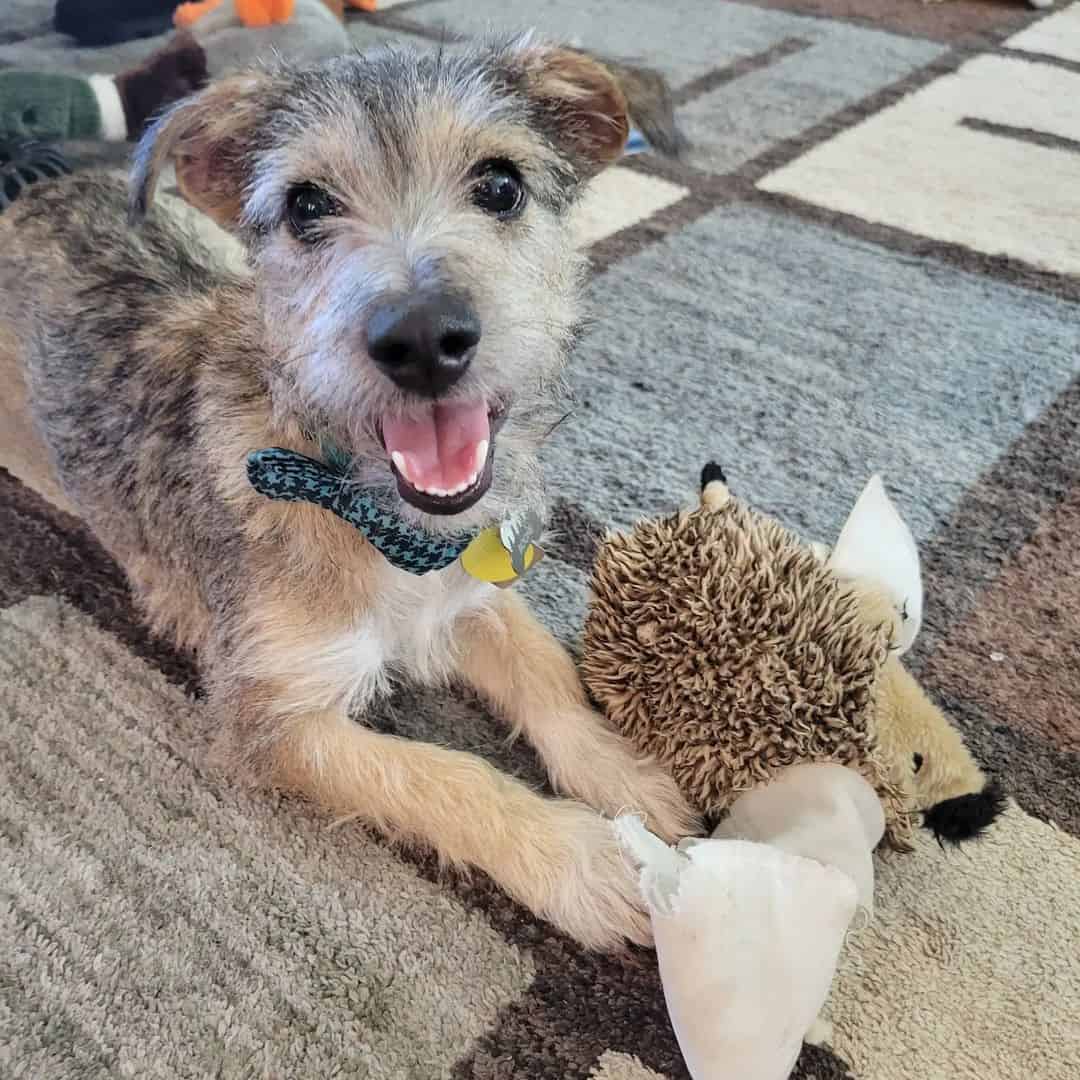
The modern Schnauzer Terrier hybrid tends to maintain a lot of the entire Schnauzer appearance because Schnauzers and Terriers have been crossbred for decades.
For instance, this mix typically has a medium-length coat and the recognizable Schnauzer beard. The coat color might vary according to the parents, but brown eyes are typically found in this breed.
Schnauzer Parent Dog
The adorable Schnauzer is a smart dog that can be found in a variety of sizes. There are now miniature, standard, and giant Schnauzers, and American families enjoy all three sizes.
The Schnauzer is renowned for their wiry coat, striking facial features, and endearing personality regardless of size. They are a favored parent breed for many distinct Schnauzer hybrids due to their characteristics.
The Schnauzer has long been a favorite among families, thanks to its eccentric traits. Your mixed Schnauzer will typically exhibit characteristics from both of its purebred parents.
Your Schnauzer parent’s size will determine how big your mix will be, with personality qualities that could be somewhere between those of either parent dog.
What Kind Of A Personality Does The Schnauzer Terrier Mix Have?
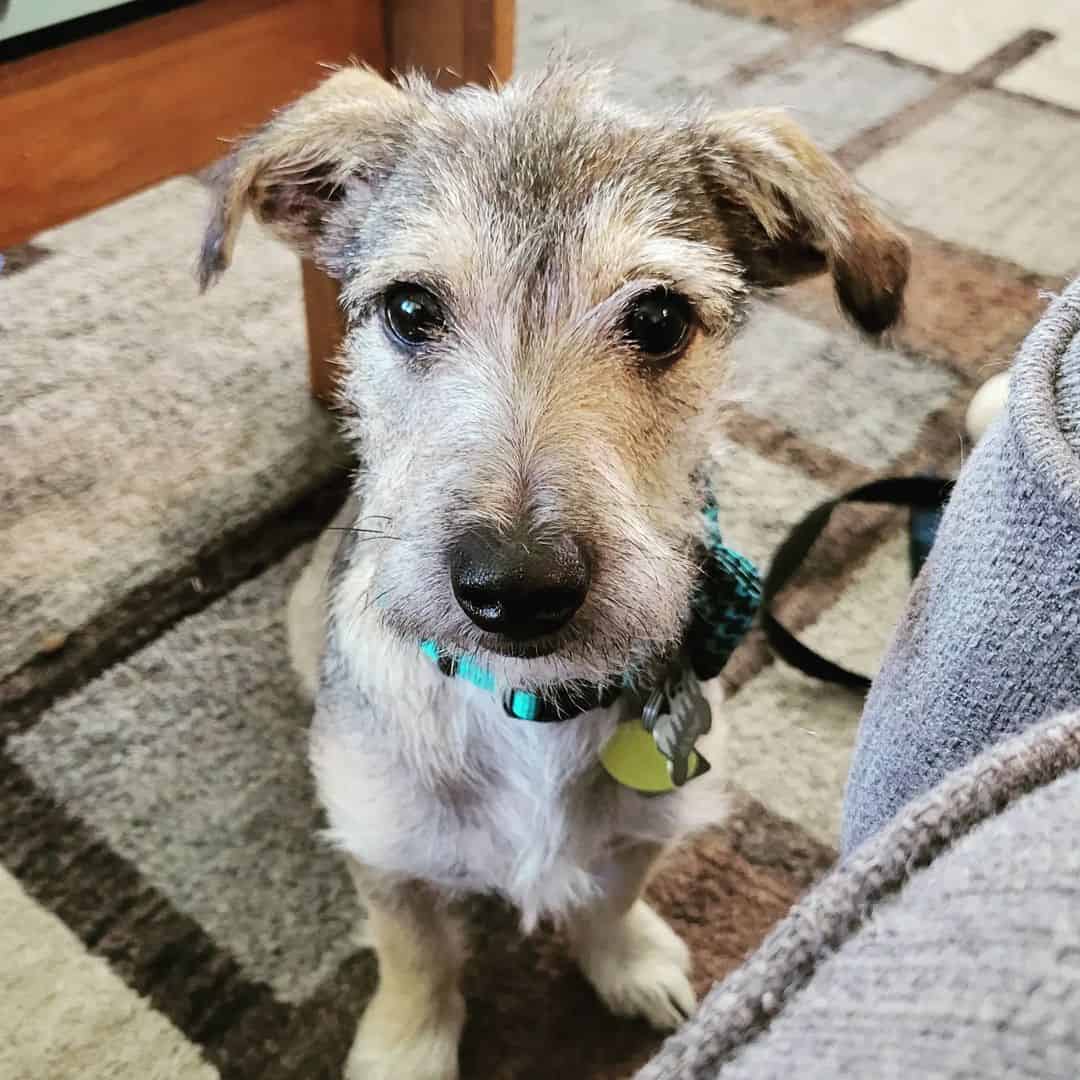
Both Schnauzers, and also Terriers are inherently clever animals; hence, the cross of the two breeds results in an exceptionally intelligent pup.
Schnauzer Terrier hybrids are keen learners that benefit most from a strong foundation in training and socialization. This combination will remain content, thanks to early puppy training and continual play and enrichment.
The smaller Schnauzer Terrier mixes are frequently quite fun and active. Schnauzer Terriers in the medium size range are frequently highly intelligent and active.
Generally speaking, Giant Schnauzer Terrier mixes are generally devoted and calm. These temperaments, however, might differ from one Schnauzer Terrier to another.
Giant Schnauzer Terriers seem to be strong, devoted dogs. Schnauzer Terriers at miniature sizes are typically more active and playful. Schnauzer Terriers in the standard form are frequently in the middle – not too active, yet not lazy.
Despite occasionally lacking the stamina and vigor of their smaller cousins, they are nonetheless rather clever, and they like playtime. All varieties of Schnauzer Terriers often take pleasure in playing and socializing with both humans and other animals.
Depending on the characteristics of their parent breeds, Schnauzer Terriers may do a lot of barking. If you’re considering adopting a Schnauzer Terrier while you reside in an apartment, or any area with a sizably higher neighborhood population, take this into consideration.
Although miniature Schnauzer Terriers normally do well in tiny spaces, occasionally they can be rather boisterous. Schnauzer Terriers, both standard and giant, can be quite active, but may not be as noisy as smaller breeds.
Several of the bigger Schnauzer Terrier varieties can develop strong protective instincts toward their masters and other family members. Every Schnauzer Terrier mix needs space to move about, and they occasionally want to be heard.
Is The Schnauzer Terrier Mix A Good Family Pet?
Schnauzer Terriers make wonderful pets for both households and single people.
There will be some disparities, various energies, and various personalities as a result of individual deviations within the mix. While some Schnauzer Terriers are very gregarious and energetic, some may be a little more stubborn and obstinate.
Building trust can be facilitated by gradually introducing your Schnauzer Terrier to household pets and other people. Over time, they’ll learn to respect and even defend the people they care about.
Schnauzer Terriers make wonderful companions once they have developed a sense of trust for others.
You should never worry about them purposefully hurting you, other members of your family, or your pets, even though they can be rather independent and strong-willed at times. It could take some time to come to terms with each Schnauzer Terrier’s unique nature.
Your Schnauzer Terrier’s success depends on how much time you spend with them and how you encourage them to interact with other people. Teaching them appropriate habits and helping them get used to people who you frequently interact with may take weeks or even months.
However, once that occurs, you will undoubtedly share many precious experiences with this adored species.
The Schnauzer Terrier mix is made out of intelligence, gentleness, and kindness. They typically love being the focus of attention, and they want to participate in what is happening. Being with Schnauzer Terriers is fun because they provide life and passion to every day.
Is The Schnauzer Terrier Mix A Healthy Dog Breed?
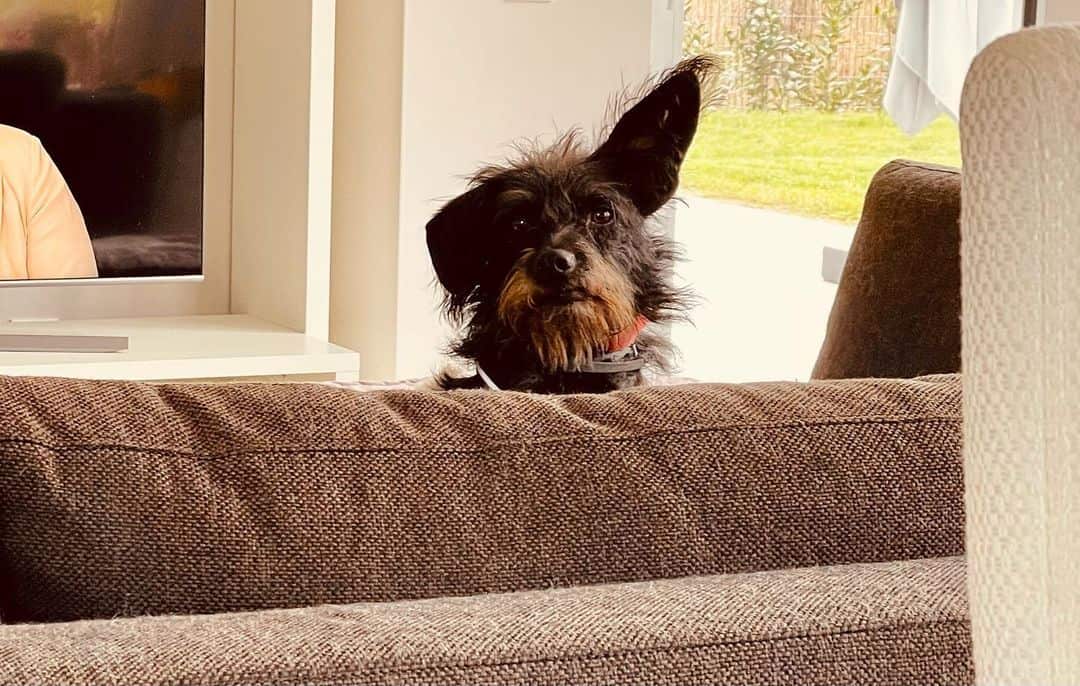
While mixing breeds can improve health, it can also bring problems that are typical of both types.
Petite Schnauzer Terriers may experience eye issues. Heart and eye problems can occasionally affect medium-sized breeds. Aside from joint pain, Giant Schnauzer Terriers might develop anemia.
You can prepare for future issues by discussing the parent breeds’ normal hereditary health concerns with your vet as well as with your breeder. Typically, an animal’s overall lifespan will depend on the size and average lifespan of its parent breeds.
Most Terriers live for at least ten to twenty years. In general, smaller Terriers live longer than their bigger counterparts. Giant, Standard, and Miniature Schnauzers often live for 12 to 15 years. Schnauzer Terriers typically have a longer lifespan than numerous other breeds.
Depending on the Terrier breed, they can have different lifespans. But, we can say that the average lifespan of a Terrier dog is from 11 to 16 years.
Having all of these ideas in mind, the Schnauzer Terrier mix will be a dog breed that will have a pretty nice lifespan of 11 to 15 years.
Possible Health Issues Of A Schnauzer Terrier Mix
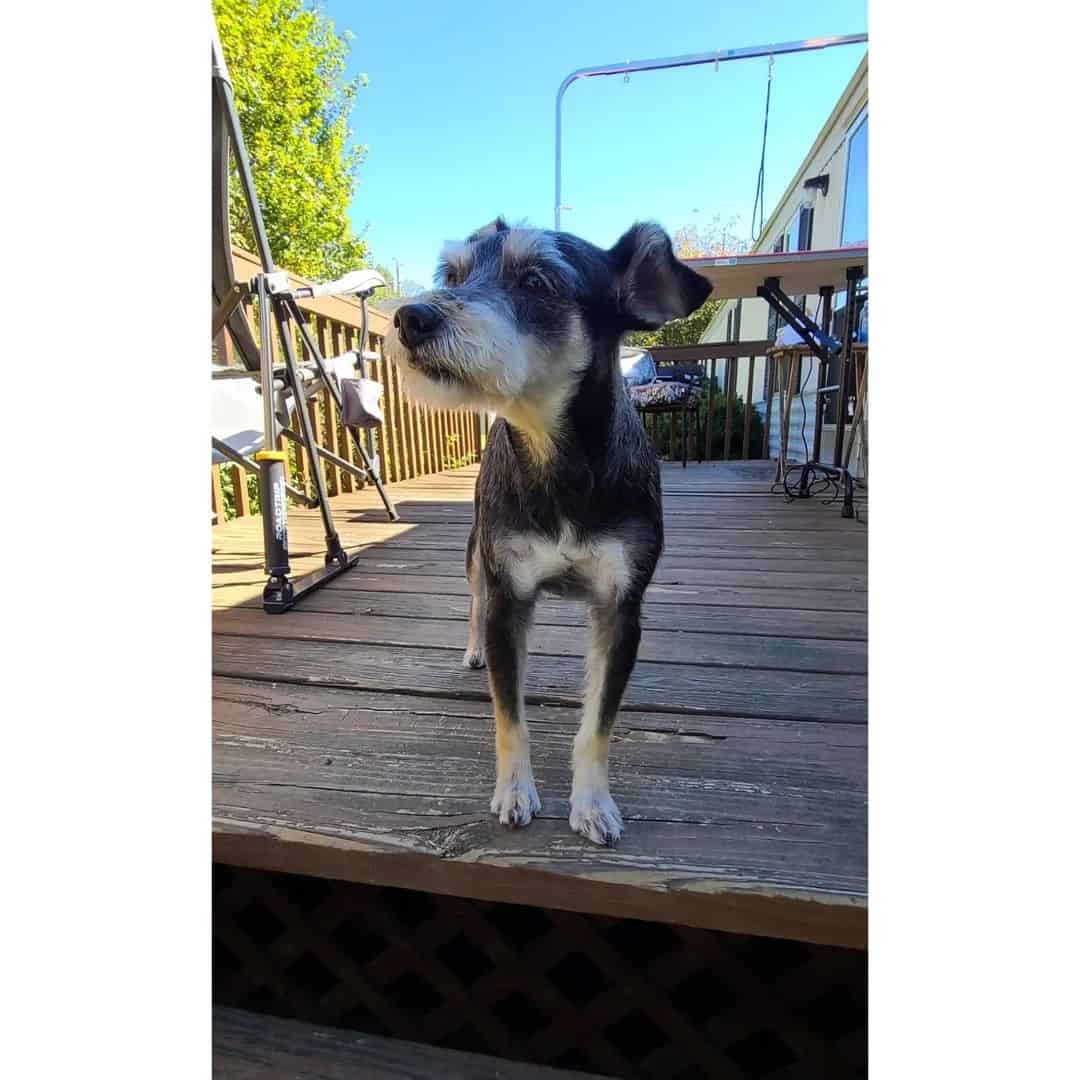
Mixed dog breeds are considered by many vet clinics and dog experts to be healthier versions of their parent breeds. It has to do with mixing the genes, which makes the probability of hereditary conditions less likely.
However, there are a few health problems that you, as a pet parent, need to keep an eye on. Those problems are mostly easily solvable, as you will see below.
1. Kidney Stones
This refers to the formation of kidney stones in the urinary system, and it is medically known as calcium oxalate urolithiasis.
Unfortunately, Mini Schnauzers seem to be the breed of dog that is most susceptible to bladder or kidney stones.
They make up about 40% of all reports, according to a 1998 analysis of far more than 15,000 urolith submissions.
According to one study, the prevalence of calcium oxalate uroliths in tiny Schnauzers was 11.8 times higher than that of other breeds, and males were 3 times more likely than females to develop these stones at an average age of 9 years.
It has been proposed that the small Schnauzer breed may be predisposed to microbial urinary tract infections due to a hereditary abnormality of the urinary tract’s natural defenses.
Because of a breed-related weakness in the urinary tract, struvite stones are commonly detected in females.
Male dogs are less likely to get kidney or urinary stones than female dogs, but when they do, they are more harmful because they can result in a potentially fatal, full urinary blockage.
So, it’s critical that you actively look for kidney stone symptoms if your Mini Schnauzer is older than 6 years.
2. Hypothyroidism
Contrary to popular belief, Schnauzers do have a genetic disorder called hypothyroidism, which should not be mistaken with their beneficial hypoallergenic properties. The hormonal condition known as hypothyroidism is frequently seen in middle-aged as well as older canines.
In such circumstances, their thyroid glands either reduce or swell, which lowers the production of the thyroid hormone. Numerous concerns can arise as a result, such as a dry, rough, itchy, or oily coat; decreased metabolic activity; a deficit of energy; mental drowsiness.
While practically any breed of dog can develop normal hypothyroidism, only Mini Schnauzers, especially those with dwarfism, can develop the much more uncommon central hypothyroidism.
It behaves extremely similar to the typical type, making it challenging to distinguish between the two. The main study on the subject concluded the following:
Because thyroid gland shrinkage occurs as a result of central hypothyroidism, it is difficult to distinguish between primary and central hypothyroidism.
The scenario in Miniature Schnauzers raises the potential that secondary hypothyroidism seems to be more prevalent than previously assumed in other breeds, and may partially account for the low sensitivity of the doggie TSH assay.
3. Follicular Dermatitis
The last health issue affecting both Schnauzers and Terriers is not life-threatening, but it can still cause your dog discomfort and necessitate medical attention.
Usually, germs that invade the hair follicles are to blame. The symptoms include papules, discoloration, epidermal collarettes, soreness, and itching when it happens to your dog’s hair follicles.
You usually won’t even need to visit the vet because this is a fairly simple diagnosis. Simply pick up some medical shampoo and keep treating the problem until the irritation disappears.
Taking Care Of The Schnauzer Terrier Mix
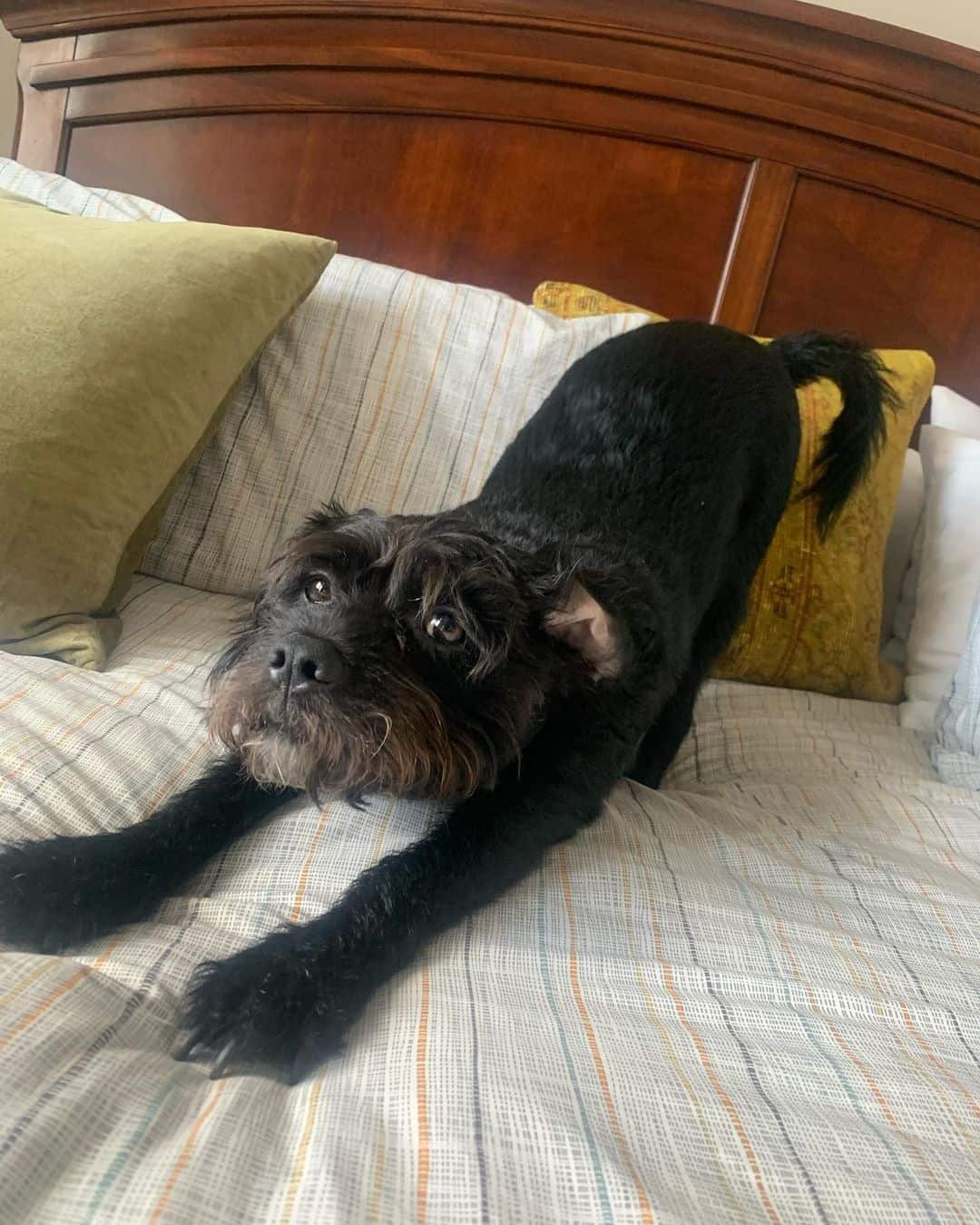
No matter if you’re a seasoned pet parent or a novice adopter, a dog can be a fantastic addition to any family. However, it’s crucial to put your doggy companion’s well-being and happiness first.
Adult dogs can consume premium-quality dry food, which can be combined with water, broth, or canned food to provide a well-balanced diet.
Cottage cheese, boiled eggs, fruits, and vegetables are all possible additions to your dog’s diet, but they shouldn’t make up more than 10% of his daily food.
Dogs require exercise to maintain their health, burn calories, and keep their mind active. Depending on the breed or breed combination, sex, age, and state of health, each dog has different exercise needs.
Dogs that exercise regularly tend to avoid lethargy, which might result in negative behaviors. Most of your pet’s instinctive need to burrow, herd, scratch, retrieve, and pursue will be satisfied by supervised fun and games.
Brushing your dog on a regular basis will help keep him clean, and cut down on shedding. During warm weather, check your pet every day for ticks and fleas. The majority of canines only require bathing a few times per year at most.
Comb or trim off all matting from the coat before taking a bath. Rinse the coat thoroughly to remove all soap; otherwise, soap residue will attract dirt.
Your dog requires a warm, quiet resting area that is off the ground, out of the path of any drafts. It’s best to use a dog bed or training crate and lay a fresh blanket or pillow inside.
Regularly wash the dog’s bedding. If your dog would be spending plenty of time outdoors, make sure it has accessibility to a comfortable, dry, protected shelter in the winter and shade and lots of cool water in the summer.
Grooming Needs
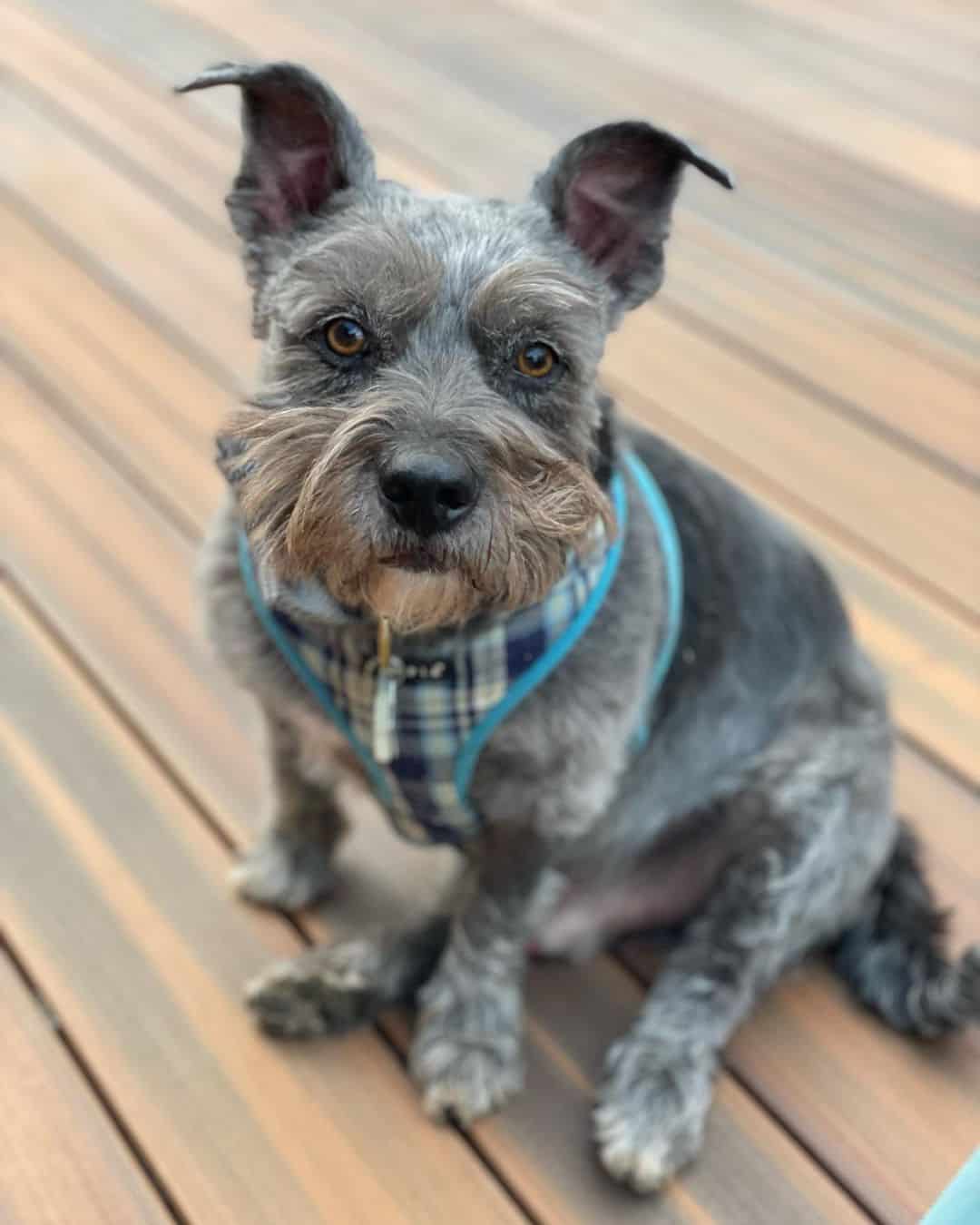
Schnauzer Terrier mix doggies require routine grooming. You should brush their hair once a week due to the mix of the wiry Schnauzer coat as well as the Terrier coat. This will get rid of any extra fur and stop it from matting and tangling.
Based on the amount of walking they have, their nails must be cut every several weeks. Nails should be clipped if you’re able to hear the nails clicking on the floor.
A few times per week, check your Schnauzer Terrier’s ears for dirt, insects, and other debris. If at all feasible, you should wash their teeth at least three times a week, but ideally everyday.
Regular face washing is also advised. Wash their face gently with warm to cool water, paying specific attention to the eyes as well as the beard.
Socialization
Puppies must socialize, and there is a limited window of opportunity for success. To grow into well-rounded canines and ideal family companions, puppies need to be socialized by being introduced to various settings, people, and novel circumstances.
Since so many people are at home most of the time, many pups miss out on this important period of time and lack the skills necessary to be by themselves.
These issues have a few straightforward fixes. This paragraph provides basic examples of how to socialize your puppy, reduce separation anxiety, and teach your puppy how to cooperate and have fun with others.
The first 3 months of your puppy’s life may forever mold its personality and disposition. Their responses to their surroundings as adults will be shaped by these initial few months.
As early as 8 weeks, we advise you to start socializing and training your puppy throughout these early months. They must develop their social skills with both individuals and other animals.
A puppy that has already been introduced to a variety of people, settings, scents, voices, touching, textures, and circumstances is an excellent place to start; waiting much longer will risk making the puppy anxious and stressed in new situations.
Exercise Needs
You could play catch with them occasionally, or take them for a stroll in the early morning or evening. Consider taking them to a nearby dog park. This will enable them to obtain the necessary exercise. While there, they can interact socially with both people and animals.
Regardless of what you choose, pick an exercise program for your Schnauzer Terrier mix, but also follow it as closely as you can.
They enjoy routines, so bringing them outdoors for a nice stroll or other type of exercise will be beneficial for them over time. It might also be a welcomed break from your hectic day.
As soon as you take your mixed-breed Schnauzer Terrier home, you can begin training it. When puppies are young, they quickly pick up instructions and knowledge, so the earlier you can instill healthy behaviors in them, the better. Maintain a regular training plan, and act consistent.
Your Schnauzer Terrier’s personality will determine the kinds of exercises and instructions you teach it, in addition to basic dog socialization and training.
For instance, you can begin socializing if it exhibits shyness or anxiety around unfamiliar animals or people. This will help your dog grow more accustomed to and amiable around others.
You might want to start practicing recall if your Schnauzer Terrier mix inherits one or more of their parents’ innate hunting inclinations.
Nutrition
After being nursed at eight to twelve weeks of age, puppies of the Schnauzer Terrier breed should consume between three and four meals daily. You can limit their food intake to two or three regular servings after they are over three months old.
Only two meals should be required each day for older Schnauzer Terriers (those that are at least six months old). The ideal calorie intake will vary depending on the dog’s age, size, bodyweight, digestion, and level of activity.
No matter how persistent they may nag you at times, don’t give them too many treats. Simply ensure that there is sufficient water available to drink, particularly in the warm, muggy summer.
Adding supplements to your dog’s daily diet will help your dog in the long run. Supplements are great for dogs prone to skin allergies and genetic conditions.
Read more: mini Schnauzer feeding chart
Other Interesting Schnauzer Terrier Look-alike Mixes
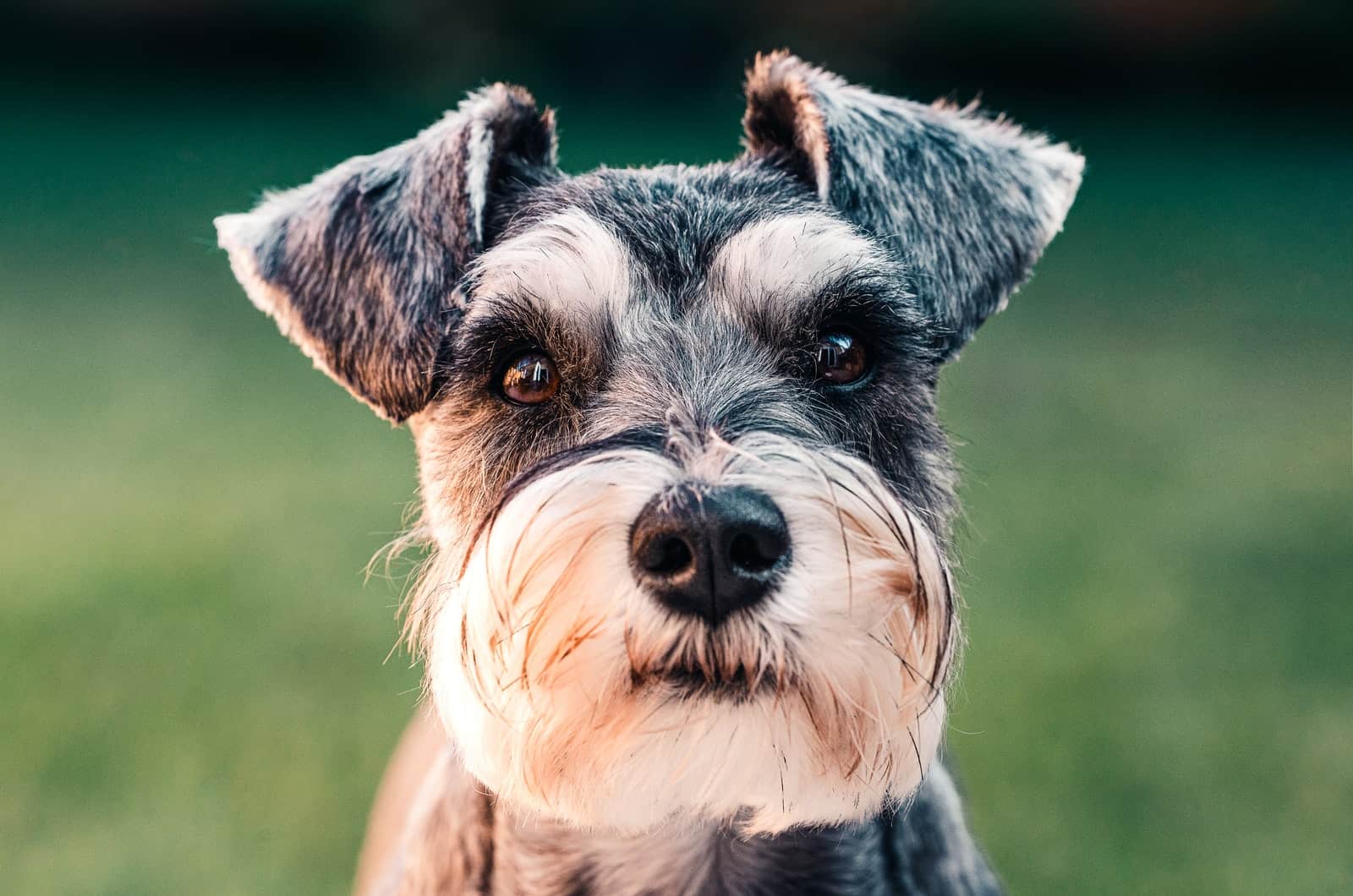
Mixed dog breeds have been an on-going topic for the last two decades. They have been growing in popularity, especially small dog breed mixes.
Since many dog owners are now living in the city centers, different sizes of dog breeds have different needs. Small animals are more welcome since the majority of the people are living in apartments.
Because of this huge interest for mixed dog breeds, especially those who have either a Schnauzer or a Terrier dog in their bloodline, I present you the most popular mixes containing at least one of the before-mentioned parent breeds:
- Snorkie (Yorkshire Terrier, a.k.a., Yorkie x mini Schnauzer)
- Schnoodle (mini Schnauzer x mini Poodle)
- Schneagle (Schnauzer Beagle mix)
- Miniboz (mini Schnauzer x Boston Terrier)
- Mauzer (mini Schnauzer x Maltese)
- Chizer (Miniature Schnauzer x Chihuahua, one of the most famous Chihuahua mixes)
- Schnug (Pug x miniature Schnauzer)
Some other popular dog mixes that include a Schnauzer or a Terrier are: the Pomeranian miniature Schnauzer mix, the Cocker Spaniel Terrier mix, the Shih Tzu mini Schnauzer mix, the Corgi Terrier mix, the Jack Russell miniature Schnauzer mix, the Dachshund Terrier mix, and the Bichon mini Schnauzer mix.
Some of the bigger variants of these designer dogs would include giant Schnauzer Border Collie mixes, the Australian Shepherd Terrier mix, and the Labrador Retriever Schnauzer mix.
Final Word
The Schnauzer Terrier mix is a versatile dog that can be found in a variety of sizes. Their options for mixed breeds are greatly increased by this. These are only a few of the outstanding Schnauzer hybrids that were mentioned above.
Schnauzer mixes come in a wide variety; therefore, we advise you to check out your neighborhood no-kill animal shelter before spending money at a reputable breeder. Whatever you opt for, this will be one of the best dogs out there.
The majority of the combinations presented here will make fantastic family pets, and give you a lot of companionship throughout the years.By avoiding the health problems of a purebred, and the associated costs, choosing a Schnauzer mix would probably increase the lifespan of your pet.
Read More: Teacup Biewer Terrier 101
